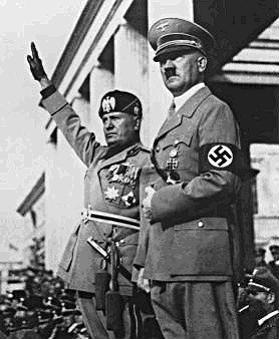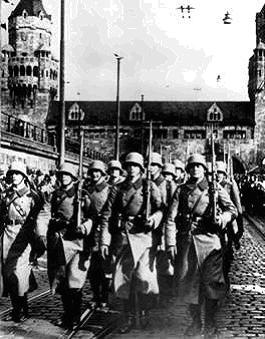
Adolf Hitler and Benito Mussolini
Adolf Hitler (right) is considered one of the most brutal dictators in history. After purging possible rivals for leadership, Hitler rearmed Germany into a modern war machine. He and Italian dictator Benito Mussolini (left), both Fascists, became allies in 1936. They are shown here in Munich, Germany, in 1937.


